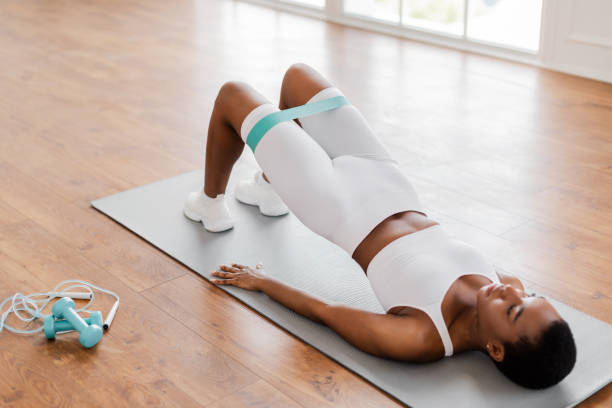
Pelvic pain can be caused by a multitude of things like appendicitis, irritable bowel syndrome, sexually transmitted diseases and fibroids. Fibroids are growths that develop in the uterus. This issue may feel like a heaviness or pressure in your lower abdomen or pelvis. It often is described as dull discomfort that makes it difficult to bend over or exercise without discomfort. Fibroids are common and more likely to appear in Black women and 20 to 50 percent of women are affected. In many cases, they may even be hereditary.
Usually, fibroids don’t cause any symptoms and don’t require treatment, but if they occur one of them may be pelvic pain. Pelvic pain can cause constant discomfort preventing you from adequately doing your daily functions.
In some cases, you may experience bladder problems that cause frequent urination.
Occasionally symptoms can lead to you being unable to urine even when you have a full bladder.
It may feel as if something is blocking your outflow of urine. Luckily, there’s something that can be done. Many pelvic exercises can help ease the pain!
RELATED: 5 Everyday Activities Causing Pelvic Pain and Bladder Pressure
Breathing Exercises
Using your diaphragm for breathing exercises allows you to brace yourself when strengthening the core muscles. Just bend your knees, lie on your back with your hands on your lower abdomen and exhale. Exhale with force to push out all of the air then inhale to fill up your lungs. As you get extra oxygen in your blood system it will help reduce pelvic pain.
Controlling your breathing will work well while doing an everyday activity, but also when you are engaging in moderate to intense physical activity.
Engage Abs During Workouts
When you engage your core during exercise, it not only helps you get a flat stomach, it also takes the pressure off of your lower region. The stronger your core, the more balanced and strong your entire body will be. The next time you are doing crunches or curls, make sure to tighten your stomach so it can pull all the pressure off of your pelvis resulting in less pain over time. During exercise, place your hand on your stomach to make sure you are engaging your core.
RELATED: A Low Sugar Diet That Can Reduce Pelvic Pain
Exercises That Don’t Require Pelvic Usage
If you are having severe pelvic pain due to fibroids, try avoiding any exercise that could cause issues. Exercises like sit-ups, crunches, and movements where hands or legs go up at the same time should be avoided.
Instead, squats, breathing exercises, and modified planks are the way to go. It may be hard to consistently find workouts that don’t involve using your pelvic area, but it is very possible!
Kegel Exercises
When it comes to pelvic-friendly exercises, kegel exercises are probably your best option. This exercise is the best for preserving your pelvic floor to avoid pain.
One of the best things about this exercise is that you can do it anywhere. Sitting, standing, or even lying down will work as long as you are on your back! Simply squeeze your abdominal muscles like you are holding back urination and hold for about 10 seconds. Repeat this five minutes a day to begin to see results!
If you or a loved one is struggling with pelvic pain due to fibroids, these exercises are great, but if the problem intensifies seek professional help.
These exercises are meant to soothe and cope with the problem, but they don’t cure anything. Issues with your fibroid can also bring symptoms like vaginal bleeding or prolonged menstrual bleeding.
In some cases, fibroids can cause severe pain that can improve after a few weeks and be relieved with painkillers.








